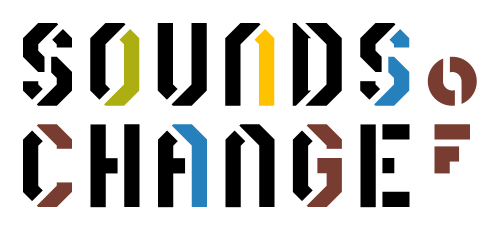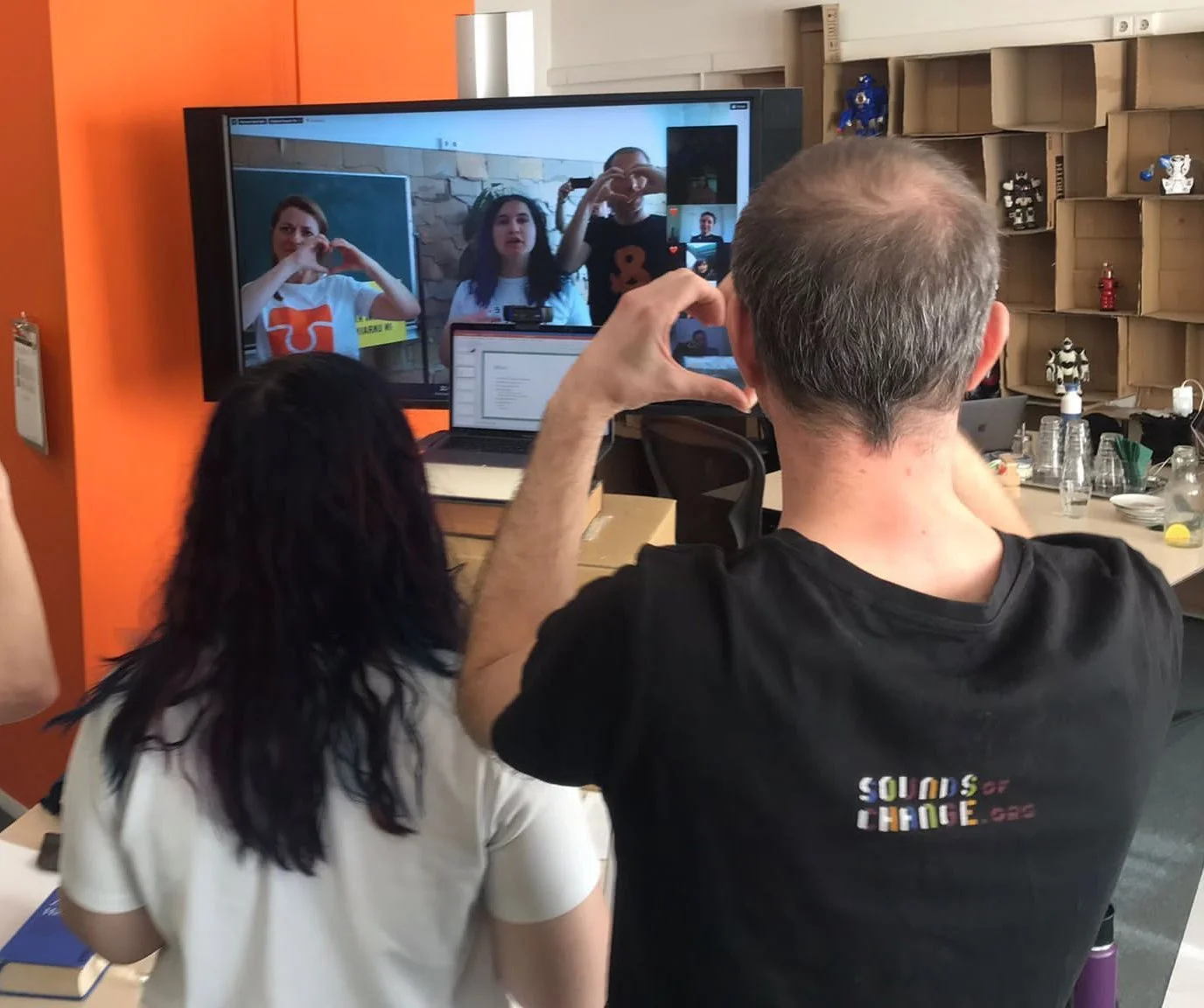Introduction
Our trainees discover how they can use the power of music in their work with young people, children and other vulnerable target groups.
They learn:
• To facilitate various musical activities.
•To design creative workshops.
• Improvising and composing with groups in a creative process.
• To integrate musical activities into other educational and psycho-social support programs.
• Trauma-sensitive work
The Sounds of Change training method consists of 4 elements:
1. Content (musical activities, games, exercises).
The music, games and exercises we provide fit easily into existing educational (PSS) programs. They aim to reduce stress and enrich life by learning something new.
The content also includes non-musical exercises and activities to facilitate dialogue and sharing circles. An example of this is the Check In/Check Out, which also often occurs in evaluation surveys.
Our hybrid online manual is the guideline for everyone who works with our methods. We are constantly adapting it and regularly add updates. These are often customised manuals tailored to the specific needs and experience of the users.
2. Structure (6-step system)
Our 6-step system brings structure to the design of the workshops and sessions. We have developed it according to the Sounds of Change mindset. The steps are a tool for building a workshop: check-in, warm-up, skills, creative exercises, cool-down and check-out. The explanation and a process model of the 6-step system can be found in our hybrid online manual.
3. Theory (practical knowledge about, among other things, trauma)
This is not about trauma treatment, but basic knowledge about the functioning of people with trauma, recognising trauma triggers and stress reactions and simple basic exercises to help people stabilise. We work with Sounds of Change according to the Trauma International system.
4. Facilitation skills (tools, exercises, mindset)
CUSTOMISATION
To do what we do, to make a real impact, we need to be able to quickly respond to the culture and needs of the people we work with. And to the rapidly changing, often chaotic, environment in which they find themselves.
Our approach recognises the context of the social relationships and environment of the trainees and the people they work with. In everything we do, the focus is on creating a safe space through music and on working with and without spoken language and on connecting with different cultures.
Training level
We tailor the on-site training to the specific needs of the local partner organisation with which we collaborate. We do this on two levels:
Training of Facilitators (TOF)
Individuals or team members who want to use the power of music in their work with different target groups.
Training of Trainers (TOT)
Individuals or team members who are already experienced facilitators and want to train other facilitators themselves.
Training and coaching online
Part of the training program always takes place online. This involves preparation, coaching and evaluating program development.
In some cases, we train completely online, if training on location is not possible at all, such as in a war situation. We have developed our own method for this.
We also use our online method as an introduction and as a supplement to physical working visits.
PROGRAM DEVELOPMENT
Our methodology is applicable in educational and psycho-social support programs. We support and guide our partner organisations in the development of their own programs, to make them more trauma-sensitive and creative.
Magic suitcase
Our magic suitcases which are our toolboxes, are indispensable. All our trainees receive them so that they can work with real musical instruments. The cases are filled with a range of percussion instruments such as boomwhackers, bells, shakers, drum sticks and a frame drum, but also a melodica and even a ukulele.






